Copyright © 2025 Motivate Media Group. All rights reserved.
X Architects has designed three projects to revitalise Dubai’s Shindagha neighbourhood
The projects are part of a wider initiative to conserve and restore the historic area
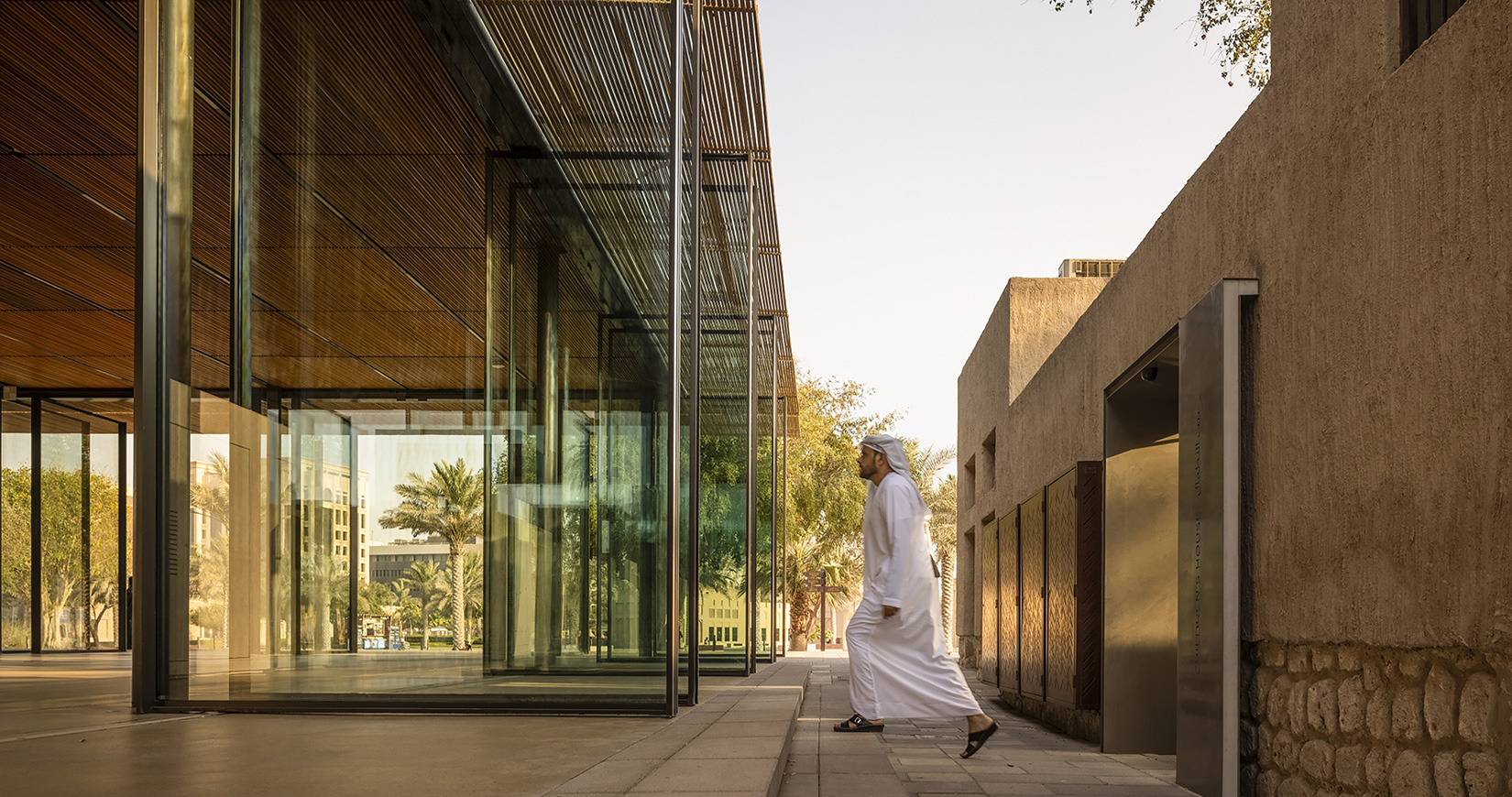
Set on the shore of Dubai Creek, Al Shindagha is bordered on the south by Bur Dubai and on the west by Port Rashid. It began its expansion when Sheikh Saeed Al Maktoum, the Ruler of Dubai from 1912 to 1958, settled in the area.
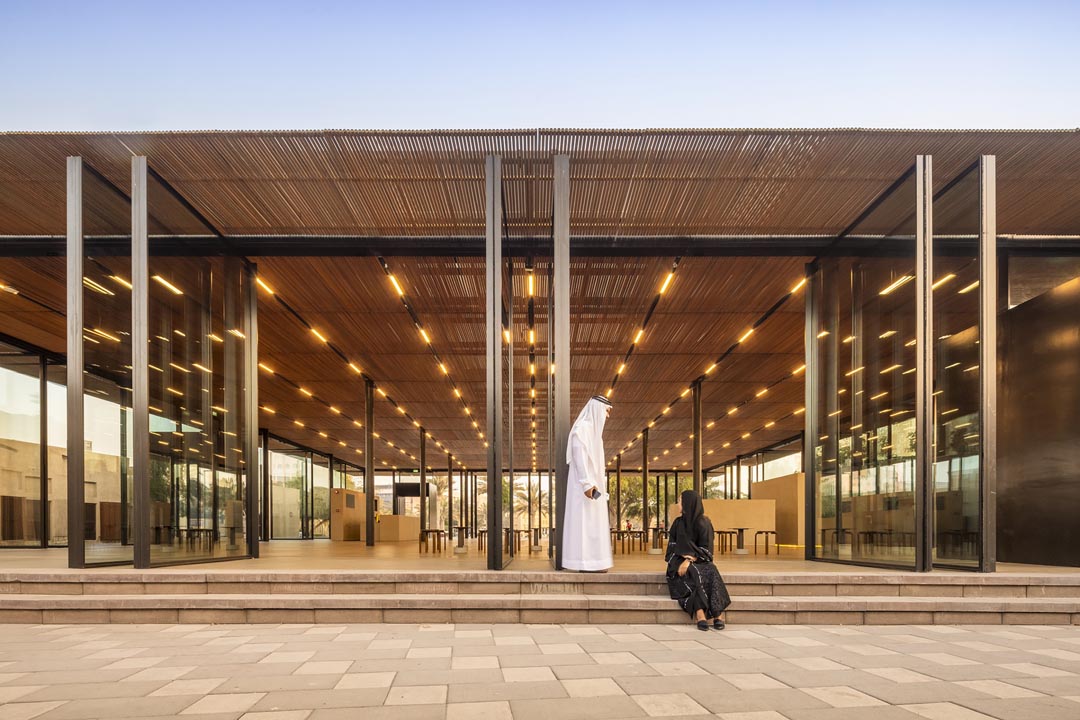
The neighbourhood is now part of Dubai’s Historic District, alongside Deira and Bur Dubai, and is currently undergoing major conservation and renovation works that will ultimately result in it becoming a prominent cultural destination.
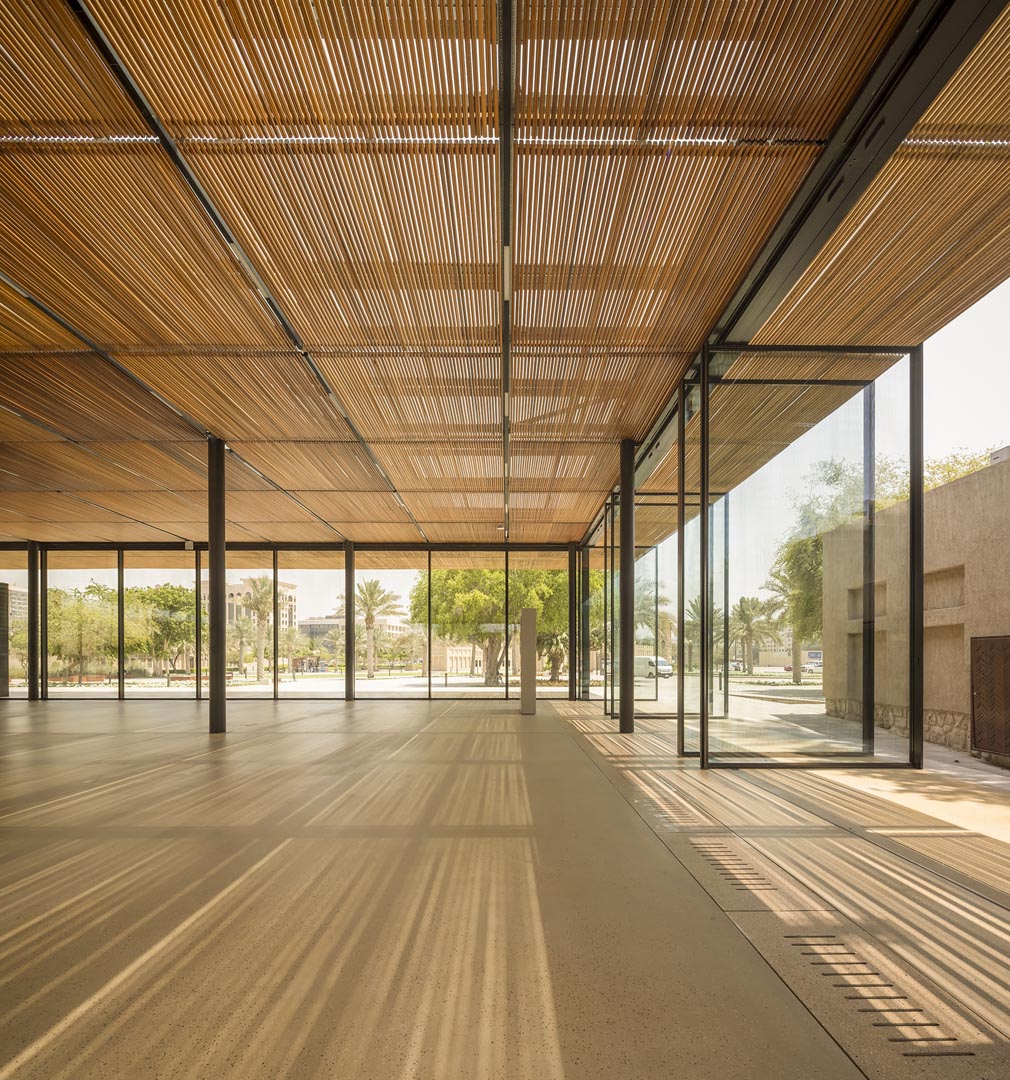
Part of this ambitious project are three newly completed cultural buildings designed by Dubai-based X Architects – the Shindagha Expo 2020 Welcome Pavilion, Story of the Creek Museum and the Perfume House – comprising both newly built structures and renovated buildings.

The architects studied the heritage and context of Al Shindagha to inform their designs, which looked to revive and restore the area’s identity while allowing for contemporary interventions. Due to Al Shindagha’s layered history, the architects focused on creating buildings that embody a coherent synthesis between the old and new, while studying its distinct materiality and textures such as the Areesh (palm leaf) and teak wood, which played a vital role in the building of wooden dhows that were present in the area. Traditionally, the district’s urban fabric expressed a balanced fusion of natural and man-made elements, which the architects aimed to maintain within the projects.
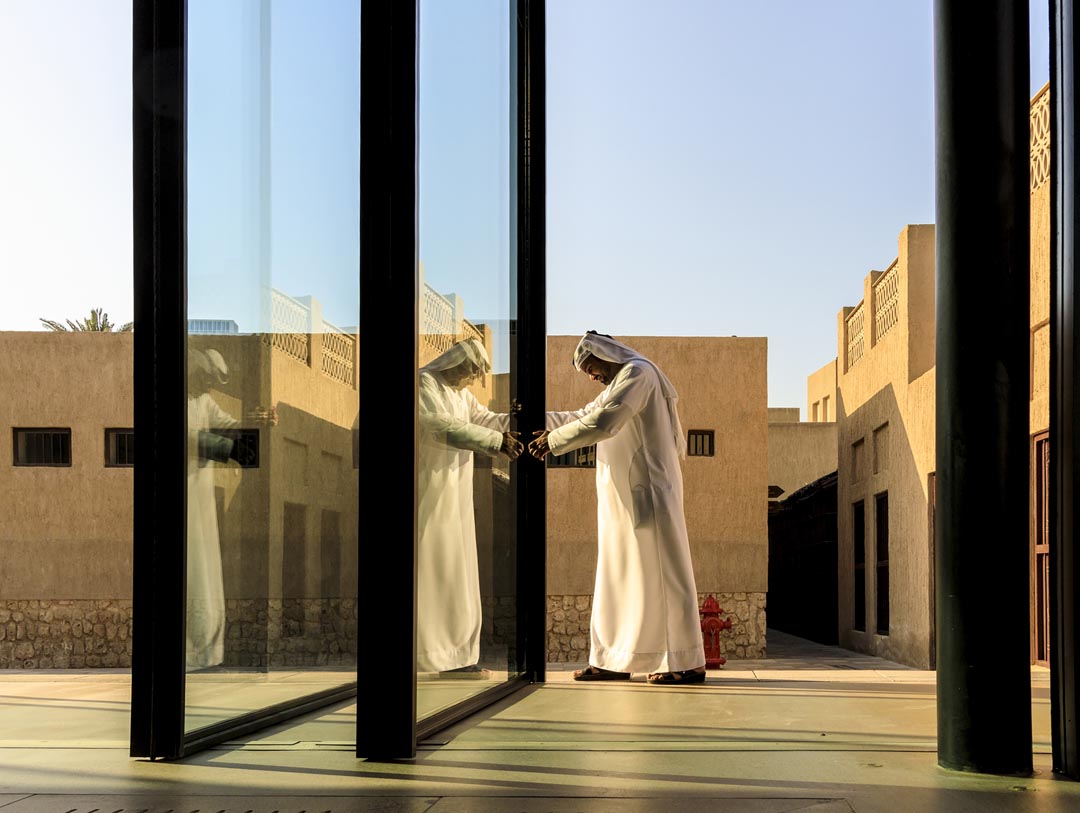
“To create a harmonious integration between the old and new we had to study the context and history of the place and maintain elements such as the ceiling materiality, textured wall finishes and wooden doors,” the architects explain. “We tried to bring in natural light and, [in the Museum and Perfume House,] provide innovative ceiling designs inspired by Arabic patterns and geometries.”

The Shindagha Expo 2020 Welcome Pavilion is a newly built structure that acts as a meeting point and information centre for visitors to Dubai’s Historic District. The building is set between traditional mud houses and is designed as an open ‘plaza’ with a teakwood roof. The flexibility of its shifting walls – which are made of glass window panels – allows for the space to either be contained or to flow outdoors.
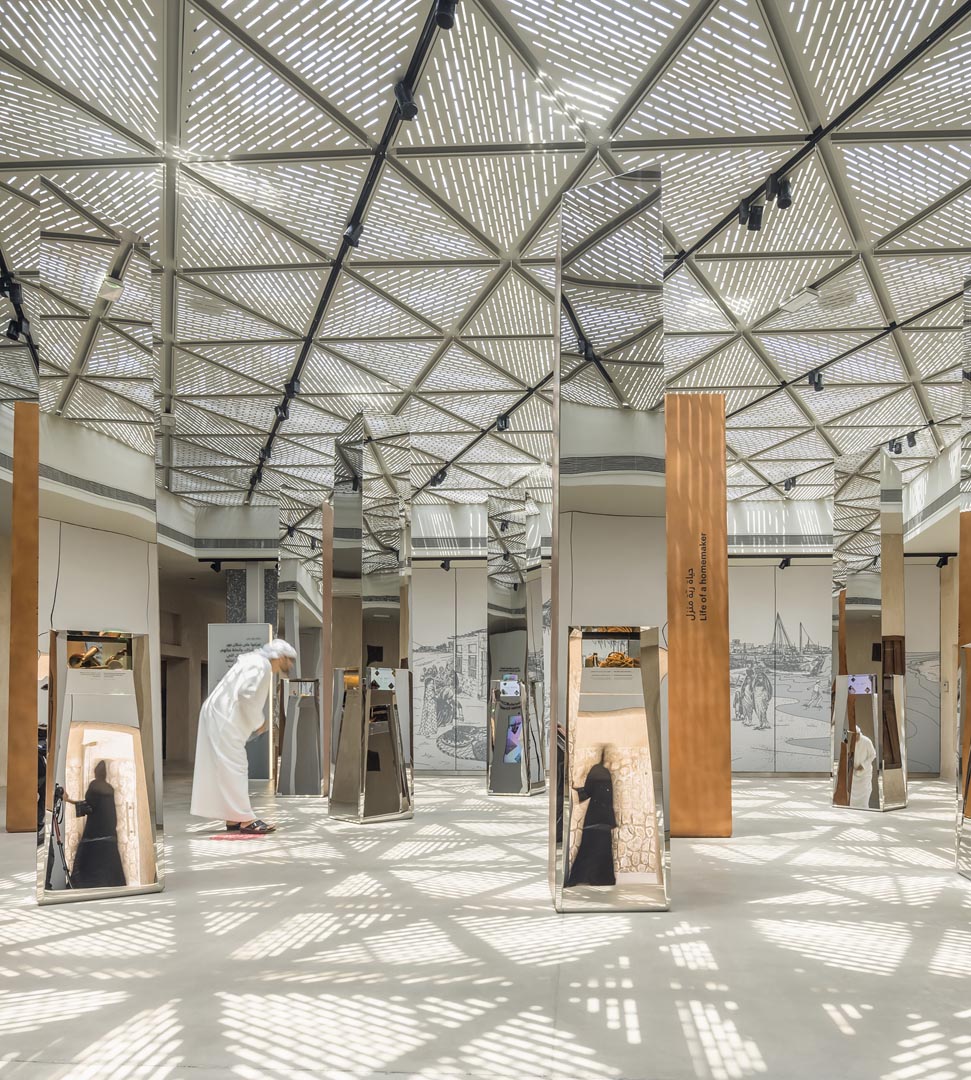
The Story of the Creek Museum, on the other hand, is a renovation of an existing building and serves as an introduction to the history of Dubai, telling the story of the city’s growth and development over the years.
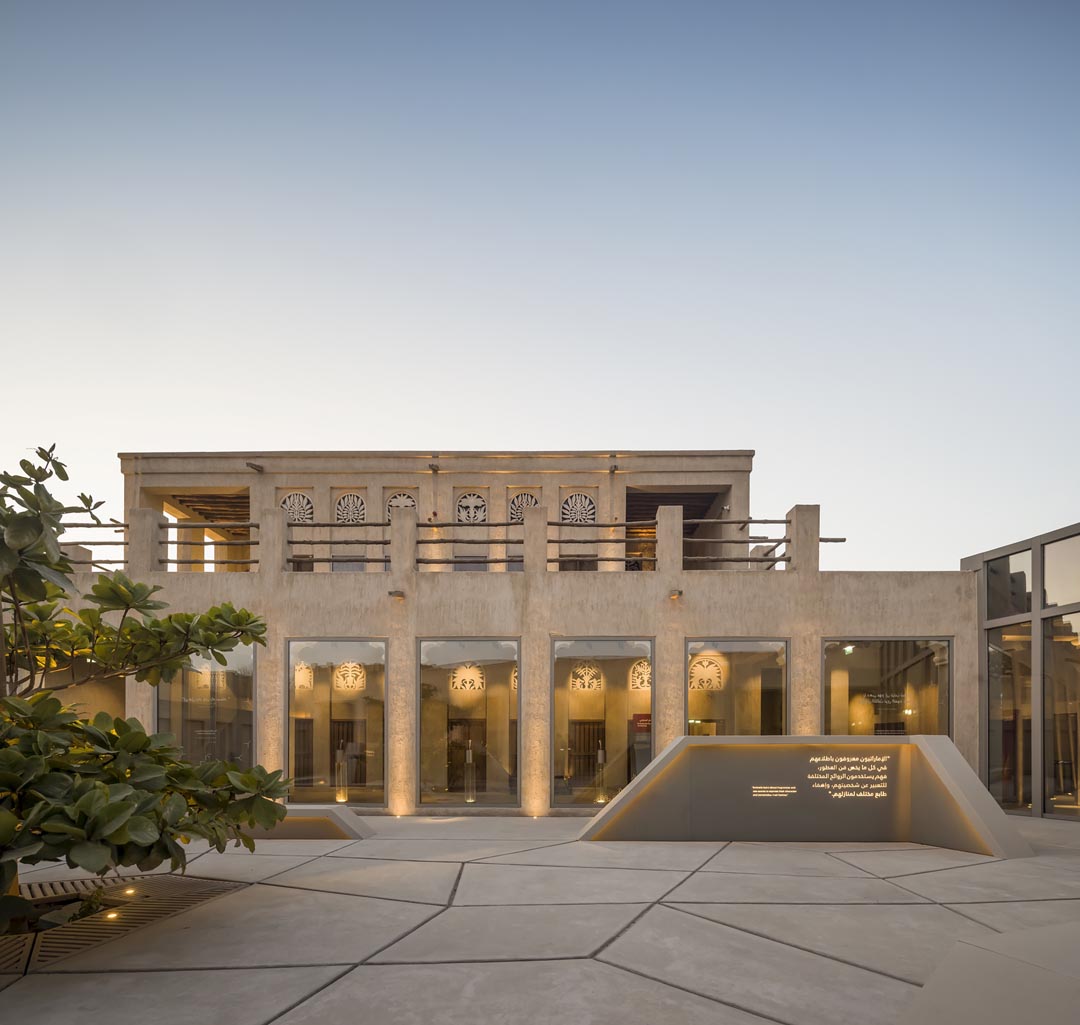
“The Story of the Creek Museum is situated in a historic house which we wanted to honour and enhance. It includes an exhibition that gives an overview of Dubai’s history, society, and [the] leadership of the Al Maktoum Family,” the architects add. The museum also sheds light on the importance of Dubai Creek and its role as a generator of trade, wealth and success for the emirate.

The building features materials such as wooden doors and windows (which have been preserved) and a newly designed perforated steel and glass roof structure – elements that one will also find in the design of the Perfume House.

Historically, the Perfume House was the residence of Sheikha Sheikha Bint Saeed Al Maktoum, renowned perfumer and aunt of H.H. Sheikh Mohammed bin Rashid Al Maktoum, current Emir of Dubai. Several of the items displayed in the Perfume House are from Sheikha Sheikha Bint Saeed Al Maktoum’s personal collection, the architects say.
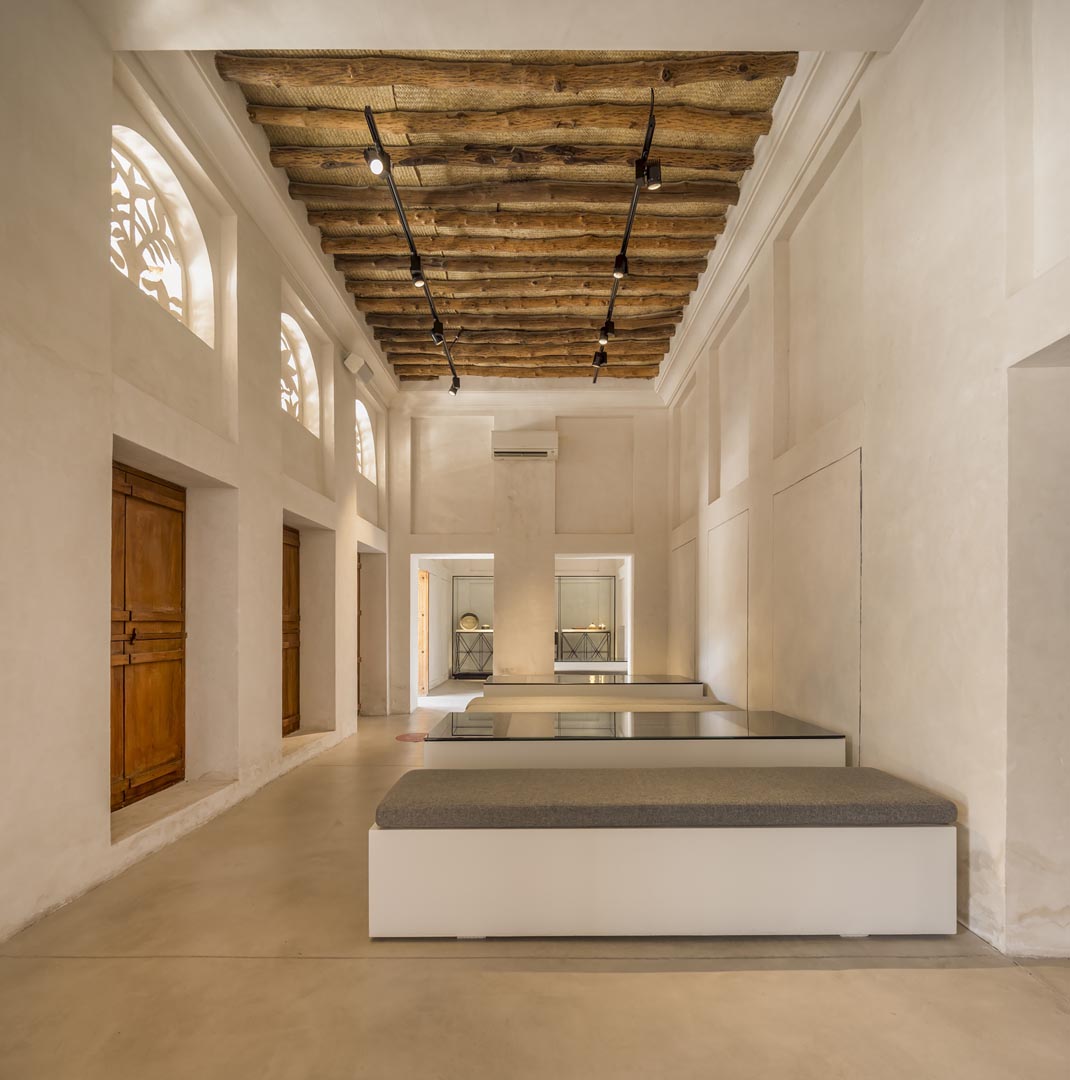
By exploring Emirati culture through scent and the heritage that stems from its fabrication and use, the Perfume House allows visitors to explore a variety of scents that are unique to Dubai via ‘perfume stations’, offering a distinct perspective into the intangible heritage of the city.
The Latest
How Eywa’s design execution is both challenging and exceptional
Mihir Sanganee, Chief Strategy Officer and Co-Founder at Designsmith shares the journey behind shaping the interior fitout of this regenerative design project
Design Take: MEI by 4SPACE
Where heritage meets modern design.
The Choreographer of Letters
Taking place at the Bassam Freiha Art Foundation until 25 January 2026, this landmark exhibition features Nja Mahdaoui, one of the most influential figures in Arab modern art
A Home Away from Home
This home, designed by Blush International at the Atlantis The Royal Residences, perfectly balances practicality and beauty
Design Take: China Tang Dubai
Heritage aesthetics redefined through scale, texture, and vision.
Dubai Design Week: A Retrospective
The identity team were actively involved in Dubai Design Week and Downtown Design, capturing collaborations and taking part in key dialogues with the industry. Here’s an overview.
Highlights of Cairo Design Week 2025
Art, architecture, and culture shaped up this year's Cairo Design Week.
A Modern Haven
Sophie Paterson Interiors brings a refined, contemporary sensibility to a family home in Oman, blending soft luxury with subtle nods to local heritage
Past Reveals Future
Maison&Objet Paris returns from 15 to 19 January 2026 under the banner of excellence and savoir-faire
Sensory Design
Designed by Wangan Studio, this avant-garde space, dedicated to care, feels like a contemporary art gallery
Winner’s Panel with IF Hub
identity gathered for a conversation on 'The Art of Design - Curation and Storytelling'.
Building Spaces That Endure
identity hosted a panel in collaboration with GROHE.
















